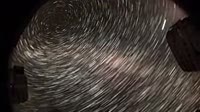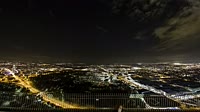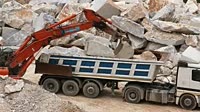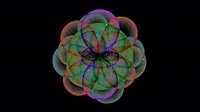Animation of the inside of a nuclear power station, showing how it generates electricity. This is a pressurised water reactor, the most common type in operation. At the heat of the reactor is the core, which contains the nuclear fuel, uranium. This uranium has been enriched in the U-235 isotope. When a neutron (yellow) hits a U-235 nucleus, it undergoes fission (left inset), releasing three more neutrons. Initially these neutrons are very fast, reducing the chances that they'll fission another U-235 atom. However, the reactor core contains water under high pressure. Water acts as a neutron moderator (central inset), slowing it down and increasing its chances of fissioning another U-235 (right inset). This process continues in a chain reaction, producing a large amount of heat energy. To help control the rate of the reaction, control rods can be raised or lowered into the core. These contain boron-10 (inset), which has a high neutron absorption capability, reducing the number of neutrons available for fission. Outside the core, the hot water from the reactor (orange) is passed into a secondary water system in heat-exchanging pipes. This converts the cool water (blue) into steam (red), which drives a conventional electricity generating turbine, which sends power out to the grid. At times of low demand, or for maintenance, the rods can be inserted into the core more, to reduce or shut down the reaction.
Details
WebID:
C01840075
Clip Type:
RM
Super High Res Size:
1920X1080
Duration:
00:00:59.000
Format:
QuickTime
Bit Rate:
25 fps
Available:
download
Comp:
200X112 (0.00 M)
Model Release:
NO
Property Release
No













 Loading
Loading